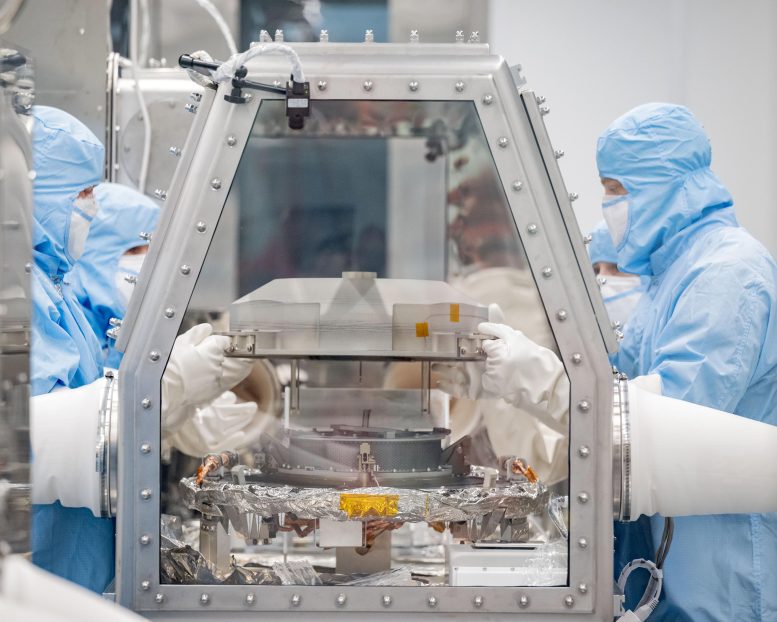
ⒸAlexandra Witze
In the two and a half months since NASA’s first asteroid sample-return mission landed safely on Earth, technicians have carefully plucked more than 70 grams of asteroid dust and pebbles from the outside of the spacecraft’s canister. Some of the pebbles even seem to contain a combination of chemical elements that is puzzling researchers.
But these early discoveries are still a long way from where planetary scientists had hoped to be after the 24 September touchdown. Last month, researchers at the Johnson Space Center in Houston, Texas, discovered that two of the 35 screws that fasten the lid of the sample-return canister couldn’t be opened — blocking access to the remainder of the space rock. Curators used tweezers to pull out what they could, but NASA is now making new screwdrivers so it can get into the equipment.
Still, there’s plenty of science to do on the 70.3 grams that technicians have managed to extract so far. Early analysis suggests that the Bennu fragments are rich in volatile chemical elements preserved in the deep freeze of space since the Solar System’s birth more than 4.5 billion years ago.
When pieces of asteroid fall to Earth as meteorites, they pass through the planet’s atmosphere, heating up and potentially altering their chemical makeup. The OSIRIS-REx spacecraft kept its copious cargo protected from any such alteration.
Among the haul is a 3.5-centimetre-long rock, the biggest collected at Bennu. Like nearly all of the Bennu material, the rock is dark-coloured, almost to the point of being black — but it also has a bluish sheen to it, Lauretta reported at the AGU meeting. That’s similar to highly reflective boulders that OSIRIS-REx photographed on the surface of Bennu as it was orbiting the asteroid. Other, smaller chunks within the Bennu sample have light-coloured reflective coatings, making them appear bright against the other dark pebbles. But under a scanning electron microscope, these showed themselves to be covered in a highly brittle layer that breaks easily to reveal a darker interior. Chemical analysis showed that this light-coloured surface skin contains magnesium, sodium and phosphate.
Other bits of Bennu contain hydrated clay minerals known as phyllosilicates, as well as carbonates, magnetite and sulfide minerals. All of these were anticipated but are good to see, Lauretta said. The Bennu sample also contains organic compounds — those containing carbon-carbon or carbon-hydrogen bonds — including a large amount of the ringed molecules known as polycyclic aromatic hydrocarbons. Organics such as these have been found in meteorites on Earth and might have been involved in the rise of life on this planet.
So far, curators have catalogued more than 1,000 Bennu particles that are larger than half a millimeter in size, Lauretta said. The screwdrivers NASA is building to free that rock and dust will need to be made from materials that won’t contaminate the samples, which are currently inside a nitrogen-filled glovebox. It could be weeks before technicians can get the stuck screws unfastened.
source (modified): https://www.nature.com/articles/d41586-023-03978-4?utm_medium=Social&utm_campaign=nature&utm_source=Twitter#Echobox=1702462071